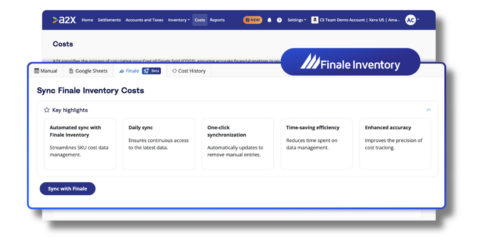
We live in an increasingly connected world. With the internet reaching more homes and devices than ever before, people are continually looking for the latest and greatest technology to keep up with work, school and personal life. The e-commerce industry is in a prime position to capitalize on the growth of online shopping, particularly in the aftermath of the COVID-19 pandemic, which dramatically shifted consumers’ priorities and shopping habits.
The Growing Consumer Electronics Market
In recent years, more people have gravitated toward purchasing technology online. Brick-and-mortar stores often have a limited selection of items, and particular locations may run out of what a shopper is looking for. Online shopping allows consumers to browse a wide range of brands and items and quickly find exactly what they have in mind.
As of January 2021, 4.66 billion people have internet access around the world. That’s over half the global population. Most of these people are easily connected to the online shopping world at all times, only a few clicks away from buying the electronics they want whenever they want.
Recent Changes in E-Commerce
The COVID-19 pandemic has changed consumers’ needs and behaviors since the beginning of 2020. When several parts of the world were staying at home, consumers found creative ways to conduct their lives through technology. People amused themselves with online media or “visited” friends and family through video chats and communication apps. Jobs and education also moved to the virtual sphere.

At the very start of the pandemic, the revenue of online shops associated with physical stores increased 52% every week. More people were shopping with their favorite stores from home. Throughout the pandemic, global e-commerce sales’ share of total retail sales rose from 16% to 19%. As the pandemic highlighted the importance of online connectivity, people’s shopping habits strengthened the online consumer electronics market.
Conducting life through a digital screen was possible because of reliable technology. Many people discovered they needed new laptops for work or new tablets for their kids and stocked up on electronics like never before. With many physical stores closed, shoppers turned to online retailers for all their needs.
Consumer electronics purchases reflected these changes, with the number of devices per household increasing heavily throughout 2020. In 2019, Deloitte’s Connectivity and Mobile Trends Survey reported that U.S. households had an average of 11 internet-connected devices. That number rose to 25 devices in March 2021. More people are buying devices than ever before, creating a rise in consumer electronic e-commerce.
Expectations for the Future of E-Commerce
As we head into a post-pandemic “new normal,” many behavioral trends affecting consumer purchasing decisions are here to stay. The most important trends in e-commerce will always revolve around meeting consumer needs. As people’s demands and priorities change, the future of online shopping will also transform.
The e-commerce sector of global retail sales has been steadily increasing over the past five years and is expected to continue this trajectory. From $310.23 billion in 2020, the global consumer electronic e-commerce market is expected to grow 10.7%, up to $343.34 billion, by the end of 2021.
The success of e-commerce for consumer electronics will only increase from here. With new trends to consider, here are three online selling strategies businesses can expect to see more of in the online shopping industry:
1. The Future of Online Shopping Will Be Powered by Voice Search
In 2020, roughly 24% of U.S. households had at least one smart speaker. That number is expected to rise to 75% by 2025. People already use their smart speakers to make many household purchases. While people might not tell their speakers to put a new computer on their shopping list, they will most likely ask questions about electronics they’re interested in.

Voice search is already leading the way for new methods of online content creation. To make their products more accessible to smart speakers, consumer electronics brands should optimize their content for conversational search terms and phrases. Answers to voice searches will highlight content featuring more natural language, and shoppers will feel like these brands understand their needs and questions.
2. Cross-Platforming Will Be Important for Selling Electronics Online
Shoppers now like to buy from many different sites. They might view products on a company’s website, learn about new products from that business’s social media accounts or shop at third-party retailers selling that brand. With shoppers having various site options, it’s important for companies to have multiple means of accessing consumers. When businesses update their sites and are active on social media, people will be eager to learn about products from their chosen brands.
3. Shopper Data and Personalization Will Affect the Future of Electronic Sales
E-commerce is now closely tied to online marketing, which involves creating advertisements based on what shoppers actually want. When updating your site and developing advertising campaigns for new consumer electronics, it’s important to consider who’s interested in these products and how likely they are to convert to paying customers.
To best serve all kinds of audiences, companies should learn their target audiences’ shopping behaviors and implement strategies to reach groups of people. Learning how much customers are willing to pay for certain items and what kinds of features they’re looking for in new products allows for more effective ad strategies. Then, companies should run social media ads, promote items that are usually bought together or retarget people who previously browsed their sites.
Personalized advertising experiences remind shoppers of exactly what they want based on their demographics or search history, and in turn, is an effective way to boost future e-commerce sales. Electronics purchases are often important, thoroughly considered events in a shopper’s life. People will be more excited to make such big purchases when they know companies care about their wants and needs.
With new electronics arriving on the market each year, it’s more important than ever to stay connected to the future expectations of the e-commerce industry. Providing the latest and greatest technological innovations to increase online electronic sales starts with understanding consumer priorities to ensure companies are providing the most relevant and useful shopping experiences.
Learn What Finale Inventory Can Do for You
By shopping online, customers have easy access to your products from anywhere in the world. With more people buying your goods from their personal devices, it’s crucial to keep your site up to date with what you actually have in stock. Finale Inventory is here to help.
Register with us today to start a free trial of our inventory management services for your e-commerce business. To see Finale Inventory in action, schedule a personalized product demo to envision what your business’s organized and newly manageable inventory will look like wherever you are!





